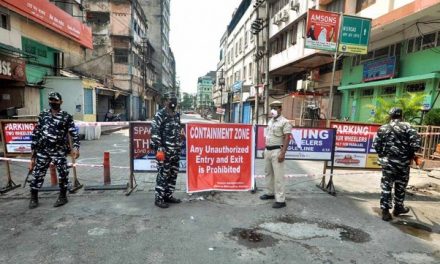Corps commander-level talks: India and China have come to a “mutual consensus” to disengage on their disputed Eastern Ladakh boundary, an Army source said on Tuesday after day-long talks between Corps Commanders on Monday at Moldo.
“The Corps commander-level talks between India and China on June 22 were held at Moldo in a cordial, positive and constructive atmosphere. There was a mutual consensus to disengage. Modalities for disengagement from all friction areas in Eastern Ladakh were discussed and will be taken forward by both sides,” the source stated.
While the Indian delegation at the talks in Moldo was led by 14 Corps Commander Lt Gen Harinder Singh, the Chinese were headed by the Commander of the Tibet Military District.
From the Indian side Lieutenant General Harinder Singh, the 14 Corps Commander, and his Chinese counterpart, Major General Lin Liu, commander of the South Xinjiang Military District and were accompanied by other officers who have charge of multiple points along the LAC were in the talks.
The Corps commander-level talks began at around 11:30 am on Monday at Moldo on the Chinese side of the Chushul sector in eastern Ladakh and ended at around 11:30 pm.
Now, Army Chief General MM Naravane will visit the disputed area in Ladakh’s Galwan Valley on Tuesday and Wednesday to discuss with ground commanders the six-week standoff with the Chinese military.
Army sources told PTI that the Chief of the Army Staff will visit forward locations and interact with troops on the ground to take stock of the ground situation and pan out the next move.
The visit comes a week after 20 Indian Army personnel were killed in a brutal assault by the Chinese military at the Line of Actual Control (LAC) in Galwan Valley which escalated the border tension
Besides, in the violent attack on June 15, the Chinese soldiers used stones, nail-studded sticks, iron rods and clubs for brutal attacks on Indian soldiers as they protested the erection of a surveillance post by China on the Indian side of LAC in Galwan.
The border between India and China covers the 3,488-km-long LAC. And China claims that Arunachal Pradesh is part of southern Tibet, and India has been contesting it.
What was on the table for discussions during commander-level talks?
The issue of “premeditated and planned action” by the Peoples Liberation Army (PLA) was the biggest talking point that Lt Gen Singh was to raise. The action by the Chinese had caused deaths of the 20 Indian soldiers and severe injuries to many others in the Indian camp in one of the deadly attacks in the Galwan Valley last week. Chinese PLA is also reported to have suffered casualties.
The talks were also held to identify steps needed to be taken for the de-escalation which would help in reducing the ongoing tensions along the LAC. According to sources the de-escalation plan included the withdrawal of troops in a phased manner from various locations along the LAC and plans for future patrols.
Issues of concern
As has been reported earlier, the ‘Finger Area’ of the Pangong lake, is one of the major concerns for India. There is a presence of a large number of troops from the Chinese PLA as well as heavy machines and armored vehicles in this area. India has too moved in its troops and specialized forces that are trained for tactical operations.
India has decided to change the Rules of Engagement at the LAC and has now given the security personnel to use force and firearms only in extraordinary situations which would help in countering the Chinese transgression as well as aggressions.












